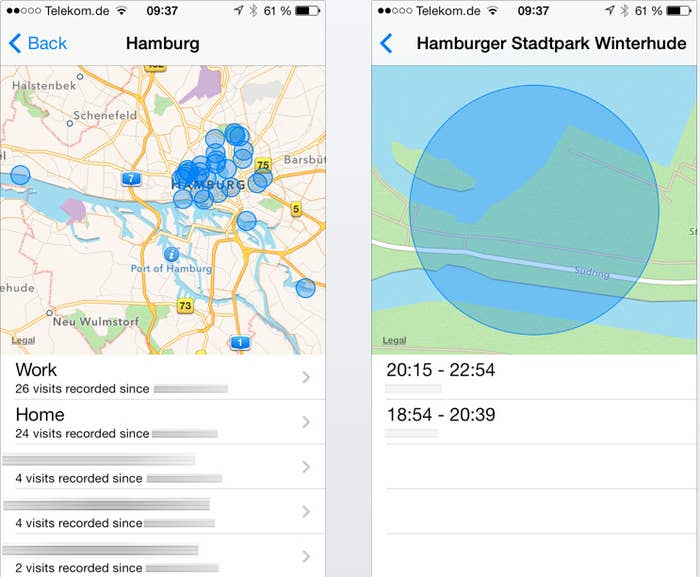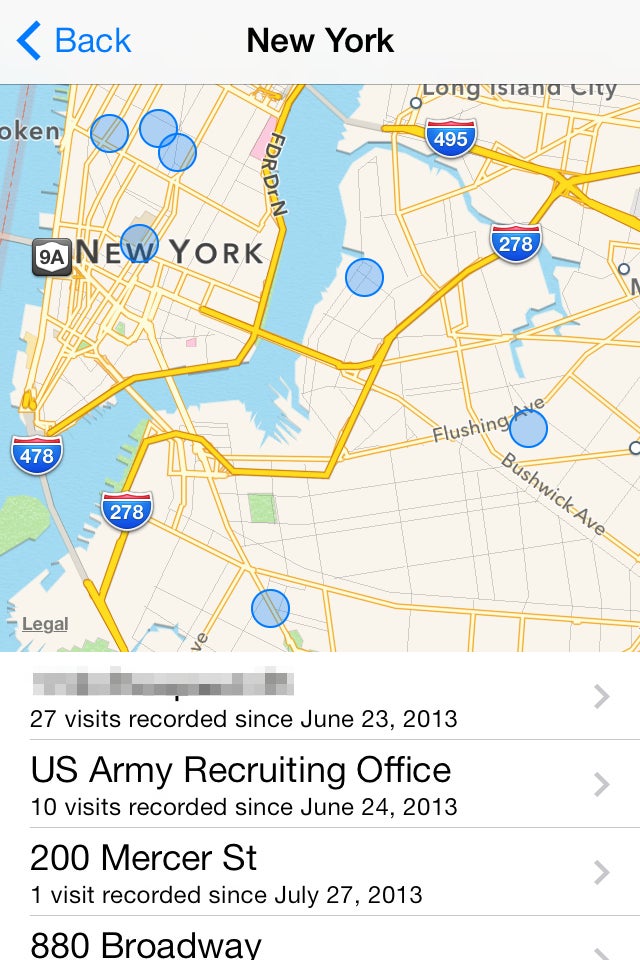
More than ever before, we've become increasingly aware of our technology's ability to monitor our movements. For the most part, smartphone users now have at least a vague understanding that service providers as well as apps and mapping services are collecting, asking for, and using location data all the time. Whether we read them or not, most of us agree to the terms of service and allow companies like Apple and Google as well as our mobile providers to track our locations. What's less known, though, is what this data actually looks like.
For iOS 7 (expected to be released to the public in September) users, that information is about to become much more accessible, as one Hacker News commenter pointed out this morning. Using iOS 7 Beta 5, the user noticed that anyone with enabled "location services" can easily access their "frequent locations," in iOS 7's privacy settings. The result is a mapped history of the places you've been since installing the operating system. Apple confirmed to BuzzFeed that this is a consumer feature for iOS 7 and not a developer-only setting.
I've been using iOS 7 since mid-June with enabled location services (the data is only collected if you've enabled the location feature) and decided to check my own log, which I was able to do easily with six swipes of a finger (Settings → Privacy → Location Services → System Services → Frequent Locations). What I found was a rather spotty but still somewhat astounding record of my movements over the past six weeks.


The information isn't always accurate, nor is it comprehensive — for instance, I've never been to a U.S. Army recruiting office, it just happens to be near my office — but for some locations, like my apartment, the records are accurate down to the hours and minutes I've spent there.
For those with privacy concerns, this kind of transparency is a welcome but unsettling discovery. Our apps and trusted mapping tools have been tracking our movements with our consent for years now, and iOS location data has been accessible for some time, but never with such ease. Even Android phones using Google Now require more work to access location information. Making "Frequent Locations" easily available and nicely laid out is actually a refreshing sign of transparency from Apple, but it's also a difficult reminder of how comprehensive and invasive our data trail can be.
It's also a remarkably clear look at the inner workings of the internet of the future, which will be largely powered by location data. Many of the most forward-looking products, including Google Now and Google Maps, currently draw heavily from and collect location information to not only answer, but anticipate our queries. In return for our personal data, we're getting increasingly sophisticated products that act as geo-aware personal assistants.
While that prospect is undoubtedly unsettling for many, the practice of location tracking is already deeply rooted in our favorite devices and applications. The fact that we're being tracked is nothing new, and while we may not be OK with it, at least now we can see it more clearly.
